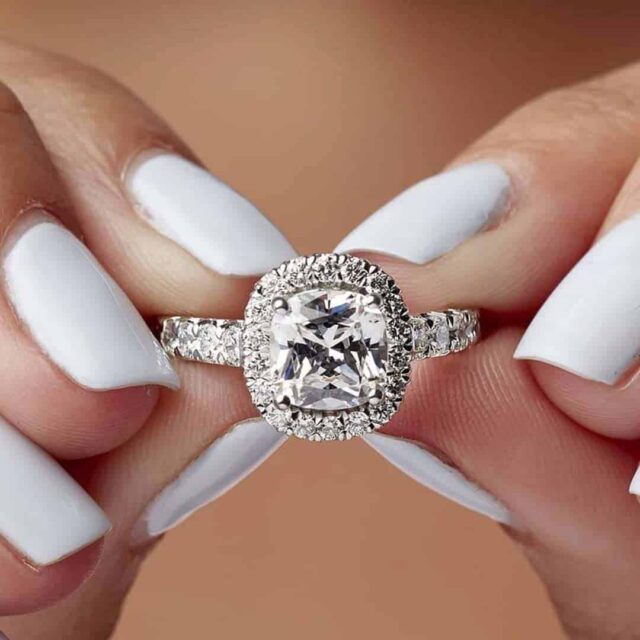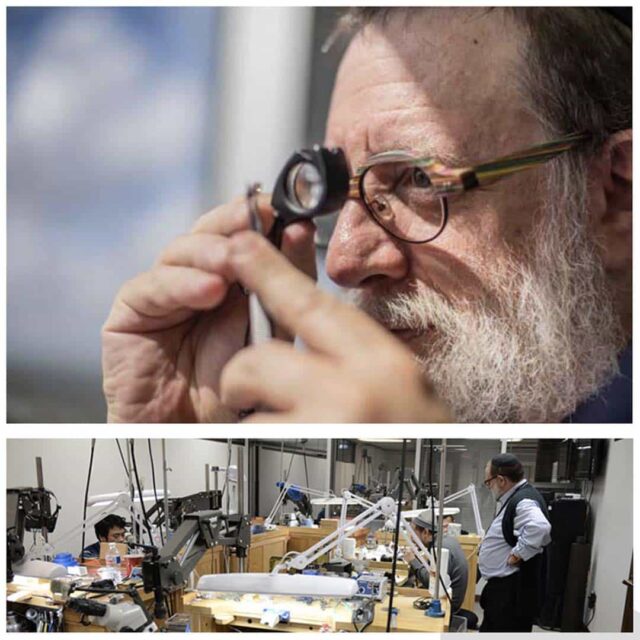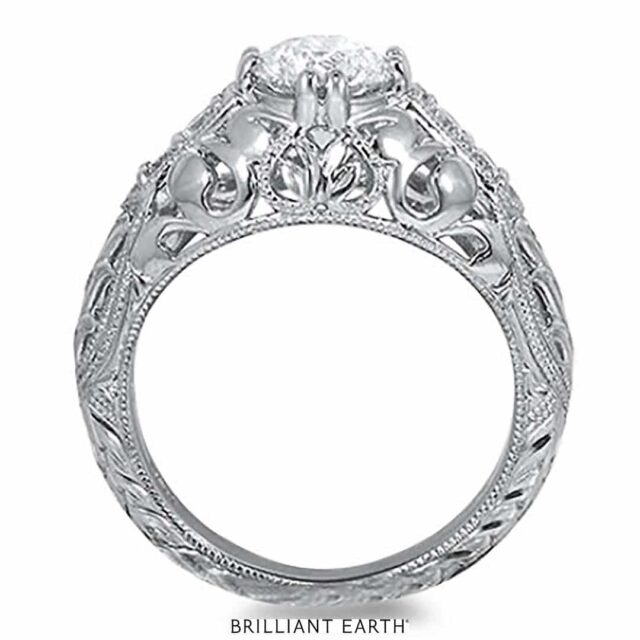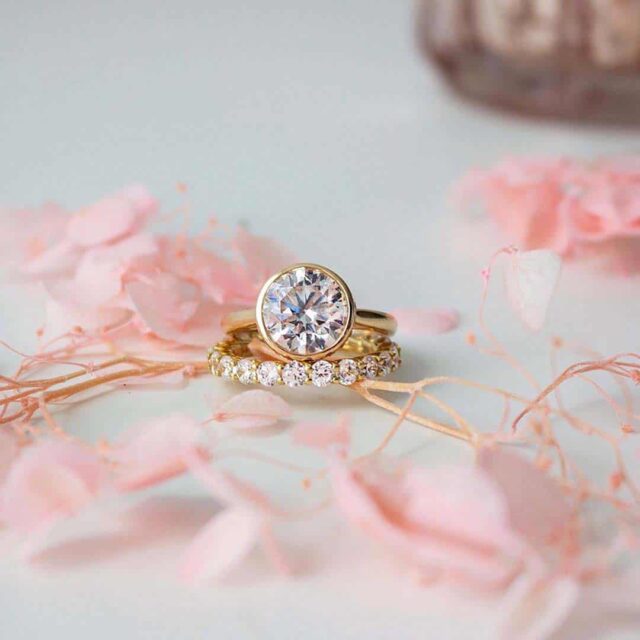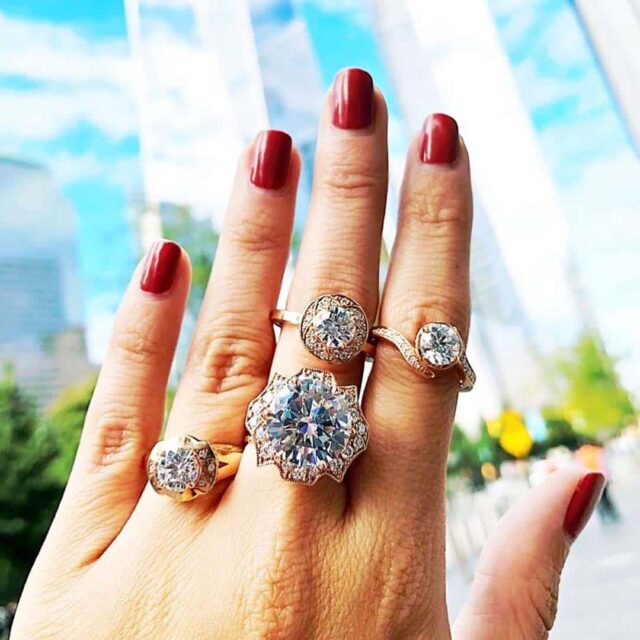How old are diamonds? The age of diamonds began once upon a time, 15 Billion Years Ago, give or take a millennium. First, there was the Big Bang, then creating the universal hologram as we know it.
Now you can keep insisting that all of this was created by "God" or "G-D" if you prefer. However, I have it on good authority that the whole thing was created by a collective group of white mice.
Apparently, the mice were practicing 'Deep Thought' in hopes of manifesting the answer to The Ultimate Question: How Old Are Diamonds? Consequently, the attempt to solve that mind-twister led to the Age of Diamonds.
Seek, and You Shall Find:
According to the mice, some people with tiny little minds might find the paragraph above somewhat confusing. However, they assure me that in the absence of that which is not.
That which is, is not, and that is why, pondering how old are diamonds gave way to the age of diamonds. Rumor has it that the earth took ten billion years to design.
As a matter of fact, the first phase of construction was completed somewhere around 4.5 Billion years BCE.
Don't take my word for it. All of the dates and historical data for this article are provided by reputable sources such as Wikipedia and Diamonds: The Quest From Solid Rock to the Magic of Diamonds <==== Big Scary Amazon affiliate link ====>.
As a matter of fact, some of the hyperbole wrapped around each "fact" is no less truthful. That's because I'm channeling the creative spirits of the members of Monty Python and Douglas Adams. Clearly, they have a good grasp upon The History of the World, Part I and II, and the Universe as a whole.
The Age of Diamonds (Pebbles and Bam-Bam):
It seems that the Canadians were in a rush to jump into the age of diamonds. That's because Canadian Diamonds formed in the earth's mantle, somewhere around 3.5 Billion years BCE.
Then it took another half a billion years for the mouse droppings implanted in the earth's mantle in South Africa to begin to take root.
And it was another billion years before the first Kimberlite Pipes to form. That's when diamonds began to push up towards the surface of the earth. By the way, that period became known as the Great 100 Million Years of Kimberlite Eruptions!
Interestingly enough, despite all the advance notice, the Canadians didn't begin mining operations to harvest the diamonds, that were "planted" by the mice, until the late 1990s. In that case, the answer to the question about how old are diamonds is somewhat elusive.
Canadian Diamond Mining Standstill:
According to the mice, the Canadians were distracted by something called Hockey & Beer. The latter is an invention that the mice helped the Egyptians develop somewhere around the 5th millennium BCE.
While the Canadians were busy spilling their Labatt Blue and yelling at their television sets, diamonds were discovered in India, somewhere around 800 BCE. However, India did not attempt to distribute the diamonds because the age of diamonds was still materializing.
As a matter of fact, they stockpiled them to control the developing diamond market. Consequently, they're able to drive up prices by limiting supply and demand. You might not be aware of this because there was a total media blackout to prevent people from determining how old diamonds are.
However, it is painstakingly apparent because nobody in India whispered a word about diamonds until the Sanskrit manuscript the Arthasastra, or the Prophet's Lesson, was published somewhere between 296 - 320 BCE.
The First Exports of Shiny Rocks:
Alexander the Great did his part to expand the international diamond market by "exporting" the first diamond out of India, somewhere around 327 BCE.
Consequently, they did so without proof of providence, certificates of origin, or any other official documents that the Kimberley Diamond Act of 2003 requires.
For the life of me, I can't figure out how he got away with this. As a matter of fact, it flies in the face of logic. After all, I can't send a diamond overseas without filling out stacks and stacks of paperwork.
Meanwhile, Alexander the Great marches out of India carrying truckloads of them. Go figure. Not that all those diamonds really did him any good.
As near as I can tell, the diamond market wasn't doing all that great between 327 BCE and 100 AD. After all, I can't find any blog posts or articles that reference the age of diamonds. Nor are there any prehistoric inventory lists of diamonds anywhere on Google. In fact, I can't find any references of their existence in any other search engines before that point in history.
Early Trade Agreements:
There is some mention of diamonds made in The Treatise of Natural History. That was written by some guy named Pliny the Elder back in 100 AD. It is rumored to be the founding document that the DeBeers Diamond Trading Company was built upon.
Seriously, I know that the "public declaration" of DeBeers being founded as a company by Cecil Rhodes is recorded as happening in 1888. However, who's to say that Pliny the Elder is not, well, an Elder of Cecil Rhodes?
Consequently, I feel that this is a reasonable argument. After all, it was only two centuries after "Pliny the Elder" drafted his Treatise of Natural History that diamonds were first imported into China.
Based upon these facts, we know that the road to global domination of the world diamond market began way back in the day, somewhere around 100 – 300 AD.
The Diamond Sutra:
Now, this is where things get really interesting. So, you know all about the Kama Sutra, right? It's an old piece of Sanskrit literature. That's filled with a bunch of prose written by Vātsyāyana.
Basically, it fills women's heads with all sorts of ideas about how they're supposed to derive sexual pleasure by letting us bend them up like a pretzel and tie them into knots.
Obviously, it's a great book. I have a copy signed by the Pliny the Elder if you're interested. Not surprisingly, it's in perfect condition, and anybody interested in the age of diamonds should buy a copy.
According to Wikipedia, "the term "Kāma" is one of the four goals of Hindu life. The word means sensual or sexual pleasure. While "sūtra" literally means a thread or line that holds things together.
Metaphorically speaking, the sutra is an aphorism (or line, rule, formula) or a collection of such sayings in the form of a manual.
Contrary to popular perception, especially in the western world, the Kama sutra is not just an exclusive sex manual. It presents itself as a guide to a virtuous and gracious living that discusses the nature of love and family life. While other aspects focus on the pleasure-oriented faculties of human life.
Peace, Love and the Age of Diamonds:
The "Vajra Cutter Perfection of Wisdom Sūtra," published in 868 AD, is the earliest known print book. Whatever [as my daughter would say while making a "W" sign with her hands], how does that help determine how old are diamonds?
The name loosely translates to the Diamond Sutra. I just registered that domain name with thanks to an abundant universe for the inspiration.
In that case, the book was first published by the Buddhists. It was commonly known as "The Perfection of Wisdom" because buying diamonds is a generous act of wisdom.
That was probably the DeBeers Diamond Trading Company's first attempt to insert the concept of diamonds as symbols of love into mainstream media.
I tried to verify this fact with the Diamond Promotion Service. However, they hung up on me, so I'll just print: "No comment" and accept that as confirmation of the facts. After all, that's what good bloggers do these days.
The First Diamond Cutters:
Apparently, the advertising efforts of De Beers were successful. In 1074 AD, diamonds were used in the creation of a Hungarian Queen's royal crown.
This was followed by the invention of Diamond Polishing in Venice around 1330 AD. The venture was later moved to Bruges and Paris.
Ancestors of Brian Gavin began cutting diamonds in Antwerp in 1447 AD. As a matter of fact, one of them invented the diamond polishing wheel in 1475 AD. That enabled diamond cutters to create facets on the surface of a diamond for the very first time.
Before that, the mice said they were merely rubbing the diamonds on their teeth to polish them. Apparently, this served the dual purpose of making diamonds sparkle while sharpening their itty bitty teeth.
The First Diamond Engagement Ring:
Finally, back in 1477, The Archduke Maximilian of Austria presented a diamond engagement ring to Mary of Burgundy. Of course, this was because he had been reading the Sutra Box Set that Pliny the Elder had sent him as an inauguration gift.
This historical moment kicked the global diamond market into full gear, and vintage engagement rings were all the rage. As a matter of fact, Indian diamond production and export reached pinnacle heights during the 16th – 17th centuries.
And you thought that I was kidding about the whole stockpiling thing that I mentioned earlier. Jeez. It's all well documented in Jean Baptiste Tavernier's literary works, who made three voyages to India in the mid-17th century.
Despite India's attempts to retain control of the world diamond industry, diamonds were discovered in Brazil in 1725. At that time, Brazil quickly became the world's leading producer of diamonds. Well, at least until the mice relocated their operations to India.
The Late-Great Diamond Jubilee:
So you know how old people are always telling us that history repeats itself? Well, get this… Back in 1739, the Shah of Iran, Nadir Shah, invaded India and absconded with all of the best diamonds and precious gems from Delhi.
Then he took all those diamonds back to Persia with him. With this in mind, nobody should really be all that surprised when the Shah of Iran does anything "off the books" because it's a family tradition.
Shortly afterward, the English chemist, Smithson Tennant, discovered that diamonds are made of carbon. He decided to light a few of them on fire to see what might happen with that in mind. Of course, he did this while they were contained in an oxygen atmosphere, which produced carbon dioxide. Whoops!
Diamond Dust & Sparkling Stars:
Now kids, if you decide to try to replicate this experiment for Science Fair, be sure to tell your mom that it's no big deal. After all, you can order a new one from Brian Gavin Diamonds.
As a matter of fact, they'll even help you with the insurance claim…" By the way, that's a shameless plug for a couple of my affiliates, but you have to admit that it was creative!
Moving forward. Shortly after that little fiasco, a British mineralogist named John Mawe visited the Tijuca diamond mines in Brazil. He wrote a detailed description of their mining methods circa 1810.
Shortly after that, in 1867, the Eureka Diamond was discovered in South Africa. This led to the Diamond Rush of 1871 in Kimberley, Africa, representing the modern diamond industry's birth as we know it.
We'll discuss all of that and more in History of the World, Part II. In the meantime, let me know if I can help you find the diamond of your dreams. Just don't ask me how old is your diamond because the only new ones are those worthless lab-grown diamonds.






